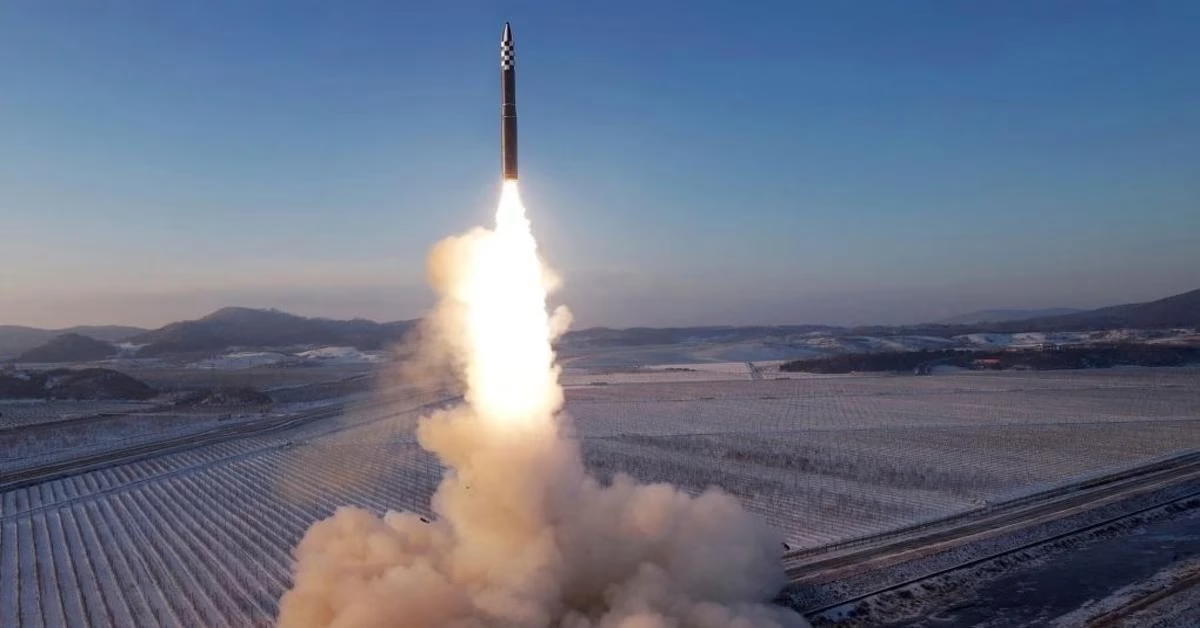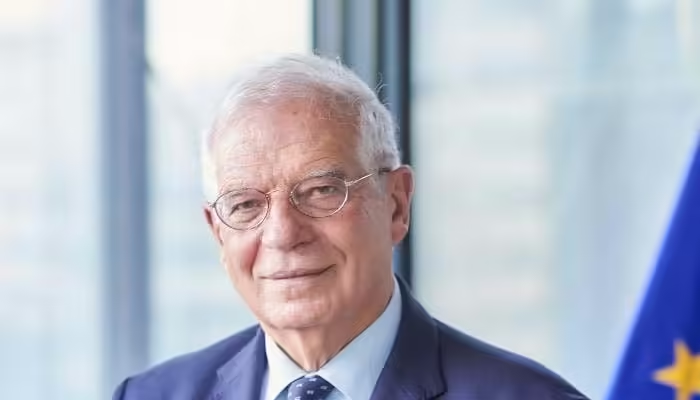North Korean leader Kim Jong Un oversaw the successful test of a new intermediate-range hypersonic ballistic missile (IRBM) on Monday, state media KCNA reported. The launch highlights North Korea’s intent to accelerate its nuclear and missile capabilities, drawing international condemnation.
Key Features of the Test
- The missile, fired from the outskirts of Pyongyang, traveled approximately 1,500 km (932 miles) at 12 times the speed of sound.
- It reportedly reached an altitude of 100 km before descending to a “second peak” of 42.5 km, maneuvering to strike a target off the east coast with precision.
- North Korea claims the missile’s new carbon fiber composite engine materials allow it to penetrate dense defense systems.
South Korea’s military, however, questioned the accuracy of these claims, estimating the range at around 1,100 km and stating that no “second peak” was detected.
Regional Context and Reactions
The test coincided with US Secretary of State Antony Blinken’s visit to South Korea, during which he pledged enhanced cooperation with South Korea and Japan to counter Pyongyang’s military threats. Blinken and South Korean Foreign Minister Cho Tae-yul condemned the launch, expressing concerns over Pyongyang’s deepening ties with Moscow, particularly in illicit satellite and space technology cooperation.
Strategic Implications
North Korea is advancing its solid-fuel IRBM program, which allows for quicker launches and enhanced maneuverability, complicating interception efforts. This marks an extension of last year’s tests involving hypersonic glide vehicles capable of evading missile defenses.
Kim Jong Un’s Vision
Kim called the hypersonic missile a “powerful weapon” against security threats and part of efforts to advance North Korea’s nuclear deterrent. KCNA shared images of Kim observing the launch alongside his young daughter, symbolizing his leadership legacy.
International Concerns
The test underscores rising tensions in the region as Pyongyang continues to push for next-generation weaponry. This launch, coupled with the timing of US leadership changes, adds to the complexity of diplomatic efforts to stabilize the region.



